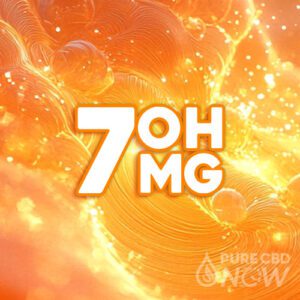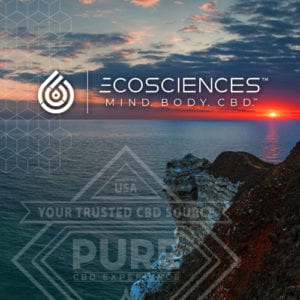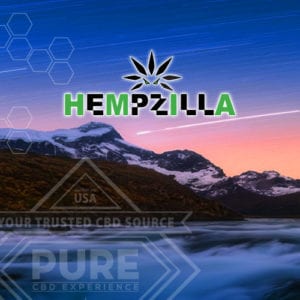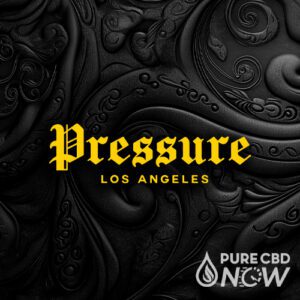Ever found yourself pondering whether mitragynine, the key component in Kratom, is basic or acidic? It’s a question that’s sparked considerable debate among scientists and Kratom enthusiasts alike. This article aims to delve into the intriguing world of this organic compound, shedding light on its chemical nature.
Understanding the properties of mitragynine can help you appreciate its effects and potential uses. So, are you ready to unravel this mystery? Let’s embark on this enlightening journey together, exploring the fascinating realm of mitragynine.
Key Takeaways
- Mitragynine is an indole-based organic compound with a basic nature, as evidenced by its pKa value of 8.9. It also has a unique chemical structure (C23H30N2O4) that allows it to interact with the body’s opioid receptors.
- The main source of Mitragynine is the leaves of the Kratom plant, where it constitutes approximately 66% of the plant’s alkaloid content. The extraction is a complex process involving harvesting, drying, boiling, straining, and evaporation.
- Despite being a base, Mitragynine doesn’t possess alkaline properties but can react with acids in a process called an acid-base reaction.
- pH plays a crucial role in determining the solubility and extraction of organic compounds like Mitragynine. Optimal pH levels during extraction processes enhance the yield of powerful compounds like 7-Hydroxymitragynine.
- According to research, Mitragynine’s basic characteristic influences its chemical reactions, interactions within the body, and potential medicinal benefits. It reacts with acids to form salts, improving solubility and ease of extraction.
- Understanding Mitragynine’s basic nature and chemical properties helps predict its physiological impacts and potential therapeutic applications, including its possible role in managing symptoms such as pain, anxiety, and opiate withdrawal.
Understanding Mitragynine: A Primer
Delving deeper into understanding Mitragynine involves a two-fold exploration: understanding its chemical nature and the methods of its extraction from its primary source, the Kratom plant.
The Chemical Nature of Mitragynine
Mitragynine is an indole-based organic compound, a basic nitrogenous substance with a pKa value of 8.9. This value signifies the compound’s basic nature as lower pKa values designate stronger acids while higher pKa values indicate stronger bases. It’s important to note, however, that being a base doesn’t necessarily signify that Mitragynine has alkaline properties. It merely implies that it has the capability to react with acids in a process called an acid-base reaction.
Researchers have identified Mitragynine’s chemical structure as C23H30N2O4. This structure comprises 23 carbon atoms, 30 hydrogen atoms, 2 nitrogen atoms, and 4 oxygen atoms, making up a unique indole ring system that enables it to interact with the body’s opioid receptors.
Sources and Extraction of Mitragynine
Mitragynine can primarily be found in the leaves of the Kratom plant, scientifically known as Mitragyna speciosa, a tropical evergreen tree native to Southeast Asia. It’s one of the primary alkaloids present, accounting for approximately 66% of the plant’s alkaloid content.
The extraction process involves a complex procedure. Leaves are harvested and dried, after this dried natural resource undergoes a series of steps including boiling, straining, and evaporation resulting in a concentrated paste or powder form rich in Mitragynine.
Remember, existing knowledge offers us the power of understanding. Acknowledging the chemical nature and extraction methods of Mitragynine/7-Hydroxymitragynine helps us appreciate the complex process that goes into the production of 7-Hydroxymitragynine available on resources like PureCBDNow. Such computations aren’t just numbers and processes, they are fascinating stories of nature’s potent offerings.
Chemical Properties of Mitragynine
This section of the article deep-dives into the chemical properties of mitragynine. Unravel the molecular side of the coin and fathom whether mitragynine swings the basic or acidic way.
Acidic and Basic Characteristics in Molecules
Every molecule carries its unique set of properties. Researchers often classify these molecules as either acidic or basic based on their disposition to donate or accept protons. For instance, take the case of a molecule holding a pKa value above 7, typically regarded as basic. One prime example of a basic molecule? Mitragynine, with its pKa value of 8.9.
Understanding this basic characteristic helps grasp why mitragynine reacts with acids. It’s not because it’s alkaline, but due to its inherent basic property. Recall, mitragynine isn’t just a basic hero, but also sports an awe-inspiring chemical structure- C23H30N2O4, ready to dance with your body’s opioid receptors.
pH Influence on Solubility
The interplay between pH and solubility is a concept pivotal in chemistry. When pH nudges into the basic domain, a molecule’s solubility often skyrockets. So, how does this relate to mitragynine?
Mitragynine thrives in an environment where solubility garners prime importance. A relevant example is during the extraction process of 7-Hydroxymitragynine, wherein the varying pH levels in each step facilitates the extraction process. This meticulous operation of harvesting, boiling, and evaporation eventually yields a potent form of 7-Hydroxymitragynine, a compound available for your perusal on PureCBDNow.
From this, it’s evident that the pH plays a key role in dictating the solubility of organic compounds like mitragynine. Capitalizing on this chemical property aids the successful extraction of compounds like 7-Hydroxymitragynine—an intricate gift of nature waiting to be unwrapped at PureCBDNow.
Scientific Studies on Mitragynine’s Nature
Delving deeper into Mitragynine’s complex chemical characteristics provides better insight into its nature. This knowledge is instrumental for successful extraction and utilization of natural compounds like 7-Hydroxymitragynine. Let’s decode the scientific studies that shed light on this topic.
Research Findings on Acidity vs. Basicity
Researchers indicate that the pKa value of a substance helps determine its acidic or basic qualities. As detailed in The Merck Index, the pKa value of mitragynine is stated to be 8.9, indicating it’s a base rather than an acid. In Layman’s terms, it has a tendency to accept protons instead of donating them, making it a proton acceptor, a key characteristic of bases. The basic nature of mitragynine influences its chemical reactions and interactions within the body.
The Role of pH in Mitragynine Reactions
Your understanding of the role pH plays in mitragynine reactions enlightens your possibility to manipulate these reactions for better results. Specific pH levels catalyze reactions; the nature of these reactions broadly depends on whether mitragynine is in an acidic or basic environment. As you remember, a base tends to accept protons and can, therefore, react with acids to form salts. Mitragynine behaves similarly; when in the presence of an acid, it readily accepts protons and forms salts, enhancing its solubility and aiding in its extraction process.
In the end, it’s key to decipher scientific concepts to demystify the properties of mitragynine. Extensive research and understanding of mitragynine’s basic nature, its interaction patterns, and effects are vital. Platforms like PureCBDNow offer products such as 7-Hydroxymitragynine, which showcase the benefits of natural compounds and their myriad applications. Remember, every bit of knowledge contributes to the wider perspective of understanding and leveraging natural compounds.
Practical Implications of Mitragynine’s Chemical Nature
Knowing the chemical nature of Mitragynine sheds significant light on its potential applications. Here we discuss two key implications — its usage in medicine and therapy, and impact on human physiology — understanding that practical applications stem from its basic nature and its interactions within various physiological environments.
Usage in Medicine and Therapy
Researchers are testing the potential therapeutic applications of Mitragynine due to its opioid-like effects. Citations link its potential in managing a variety of symptoms such as pain, anxiety, and opiate withdrawal. Against the backdrop of this, a study published by Frontiers in Psychiatry discovered that Kratom’s medicative benefits primarily arise from Mitragynine’s basic behavior at the physiological pH, interacting with the body’s opioid receptors.
Additionally, another study in the British Journal of Pharmacology indicated a correlation between Mitragynine, its interaction with acidic environments, and specific chemical reactions. Whenever you’re pondering over Kratom’s therapeutic potential, keep in mind these connections influenced by Mitragynine’s basic nature.
Impact on Human Physiology
Without a doubt, understanding of Mitragynine’s chemical properties — including its basic characteristics — plays a pivotal role in interpreting how it affects human physiology. Its basic nature, as evidenced by a pKa value of 8.9, has profound implications in the human body. For instance, it changes the dynamics of solubility and absorption in the stomach, which typically has an acidic pH.
Moreover, it interacts with multiple opioid sites, triggering a series of reactions that influence mood, perception and response to stress and pain. Several studies published in the Journal of Ethnopharmacology and Psychopharmacology provide preliminary insights into these interactions.
Revolutionize your comprehension about plants like Kratom by diving deep into their active components. Enhance factual knowledge on compounds such as 7-Hydroxymitragynine orchestrated by nature; visit sites like PureCBDNow that offer these. Your knowledge is your power in making informed decisions.
Conclusion
So you’ve journeyed through the world of mitragynine, from its basic chemical nature to its potential medical uses. You’ve seen how its interactions with acidic environments and the body’s opioid sites can influence mood, stress response, and even manage pain and anxiety. You’ve learned about its extraction and the importance of understanding its properties for informed decision-making. Now, you’re equipped with the knowledge of how this natural compound, found in Kratom, plays a significant role in human physiology. Remember, it’s not just about whether mitragynine is basic or acidic, but how this characteristic impacts its solubility, absorption, and ultimately, its effects on the body. This understanding is key to unlocking the potential of other natural compounds like 7-Hydroxymitragynine. Keep exploring, keep learning, and keep making informed decisions.









































